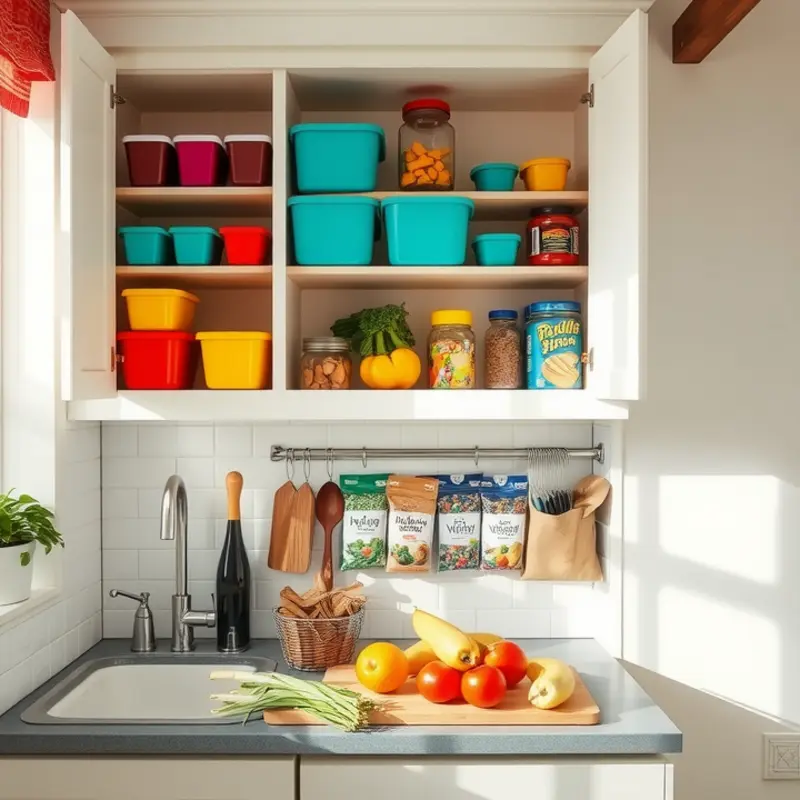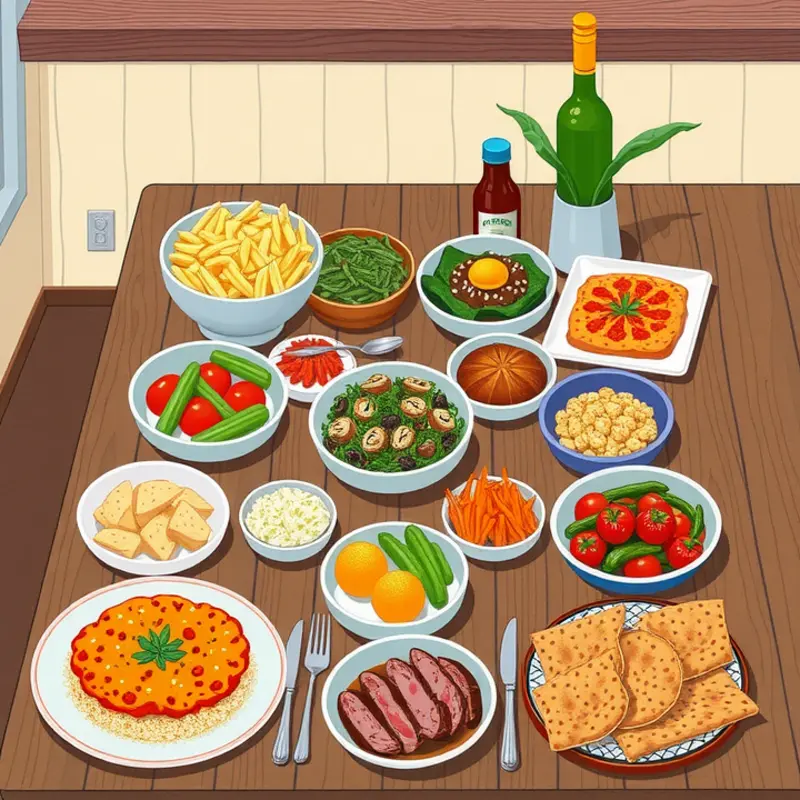Busy schedules can make meal planning feel overwhelming. This guide provides practical, efficient ingredient sorting techniques that families can easily implement. Imagine fewer last-minute grocery runs and more time enjoyed with loved ones at the dinner table. These meal prep strategies focus on simplifying your routine, saving you time and stress while ensuring nutritious meals make their way to your table effortlessly.
Mastering the Art of Ingredient Categorization

Ingredient sorting doesn’t have to be an overwhelming task in your meal preparation routine. By focusing on grouping items into intuitive categories like proteins, vegetables, grains, and dairy, you can create an efficient and organized system. Using transparent bins or neatly labeled containers ensures that everything is accessible, allowing you to easily see the ingredients you have available for any meal.
Categorizing ingredients begins with identifying the main groups your household typically uses. For proteins, you might set aside sections for chicken, beef, tofu, or seafood. For seafood enthusiasts, consider exploring speedy seafood prep to add agility to this part of your routine. Vegetables can be organized by their storage requirements or preparation time, keeping leafy greens together and hardier root vegetables grouped elsewhere.
Grains and pastas are straightforward but often overflow through pantries if not properly contained. Use clear containers labeled with cooking times or common pairings, such as ‘quick-cooking couscous’ or ‘whole grain pasta,’ to streamline your choices. Dairy items should be organized based on usage frequency. Cheeses and yogurts are constants in many households, so ensure they are easily reachable while less frequently used items can be placed in secondary spaces.
A clever twist to these categories is sorting by preparation time. Quick-cook items and those requiring longer preparation times can be organized on opposite sides or shelves. This arrangement gives you flexibility, allowing you to make meal decisions based on the time you have available. For instance, when you’re pressed for time, gravitate towards the quick-cook side intuitively.
Moreover, this system has benefits beyond simplicity in meal planning. It encourages less food waste as you can visibly identify items approaching their use-by dates. Regularly rotating stock when organizing keeps freshness in check and makes it easier to integrate new groceries without hassle.
Simplifying your meal planning through smart ingredient categorization takes a small initial investment of time but repays in daily convenience. With a well-thought-out system, meal preparation becomes not only easier but also more enjoyable. As you master these techniques, you might find that other housekeeping aspects follow suit, creating a more organized and stress-free kitchen experience.
Quick Meal Plans Using Your Sorted Ingredients

Once you’ve efficiently sorted your pantry and fridge according to ingredient type, creating quick meal plans becomes a seamless task. Utilizing a standard template for a week’s meals will save time and minimize stress. Pre-categorize your sorted ingredients like proteins, vegetables, grains, and spices, and then choose quick-prep meals that fit each category. For a busy week, meals like stir-fries and salads are excellent. These dishes allow you to combine pre-prepped vegetables and proteins swiftly into delicious and nutritious meals.
Creating a weekly template involves pre-selecting types of meals for certain days. You might designate Mondays for simple pasta dishes, utilizing any leftover vegetables or proteins. Stir-fries can occupy as little as 15 minutes on a Tuesday because they harness the power of pre-cut vegetables and perhaps some tofu or chicken prepped over the weekend.
One of the keys to this strategy is monitoring pantry levels and picking ingredients nearing their expiry to incorporate into your meals. This approach prevents waste and keeps your meal plan dynamic enough to adapt to the ingredients on hand. Rather than starting from scratch each week, a rotating menu can keep family dinners both exciting and varied.
Another tactic for meal planning is to integrate a ‘leftover day’ into your week, allowing you to creatively use any remaining ingredients before they spoil. Such a method not only reduces waste but also boosts your culinary creativity as you experiment with combining various elements into a new dish.
Engaging with this process can be enlightening and fun. Review your pantry periodically to discern which items have consistently been left unused. This could be an opportunity to either incorporate those into your meal plans by finding recipes that use them or reassess your buying habits to avoid stocking items that rarely get used.
Encourage variety not just in your recipes but also in ingredient usage. Try incorporating new seasonal vegetables each week or alternating between different protein sources such as legumes, poultry, and seafood. Keeping track of what’s been consumed will also highlight what ingredients you need to stock up on or replace less often, aiding smoother meal preparation.
For further inspiration and efficiency tips, take a look at minimal prep dinner ideas for approachable recipes that fit snugly into a bustling schedule. These ideas can help expand your weekly menu options and ensure that meal preparation remains quick and enjoyable.
Ultimately, creating quick meal plans utilizing sorted ingredients not only simplifies your kitchen life but also makes family dinners more enjoyable and less of a chore. These strategies ensure that meals are stress-free, varied, and aligned with your dietary preferences and schedule.
Final words
Efficient ingredient sorting is not just about organization; it’s a vibrant approach to transforming your kitchen into a hub of creativity and togetherness. By categorizing ingredients and planning meals accordingly, busy individuals and families can enjoy nutritious, homemade dishes without the stress. Embracing these techniques not only saves time but also fosters family involvement in meal preparation, making it more enjoyable. With simple habits, mealtime can become a cherished time of day, filled with laughter and delicious food. Make these strategies part of your routine, and watch your meal planning transform into a smoother, more enjoyable experience.







